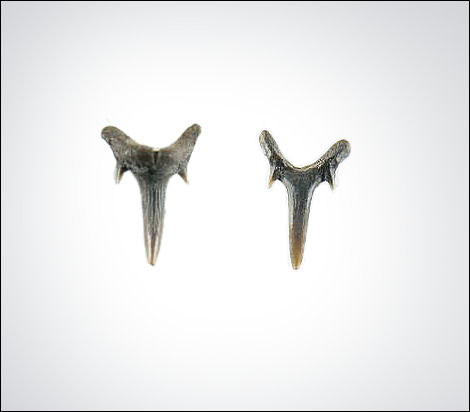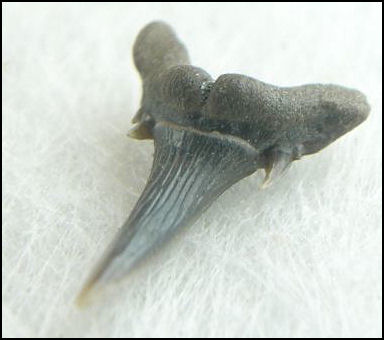|
Sand Tiger Age - Cretaceous Commonality - Uncommon Named after the town of Holmdel, NJ this is the only Cretaceous sand tiger from NJ to have striations. These teeth are small, reaching a maximum size of a little over 1/2 inch. The striations are relatively strong, usually covering the top 2/3's of the lingual side of the crown. Anterior teeth have a large slender cusplet on each shoulder. The lateral teeth usually posse a smaller pair of secondary cusplets with less pronounced striations and a wider root arch. Like all the sand tigers E. holmdelensis has a strong lingual protuberance and obvious nutrient grove on the root. These teeth are uncommon and due to their small size and delicate nature, finding a complete tooth presents somewhat of a challenge. The anterior teeth of E. holmdelensis and juvenile goblin (Scapanorhynchus texanus) teeth are very similar.
Lingual and labial view of the same anterior tooth.
Profile - Anterior teeth have a strong lingual protuberance and
Striations on the anterior teeth are relatively strong.
Lateral E. Holmdelensis with secondary cusplets.
Scan gives a perspective of average tooth tooth size. |


